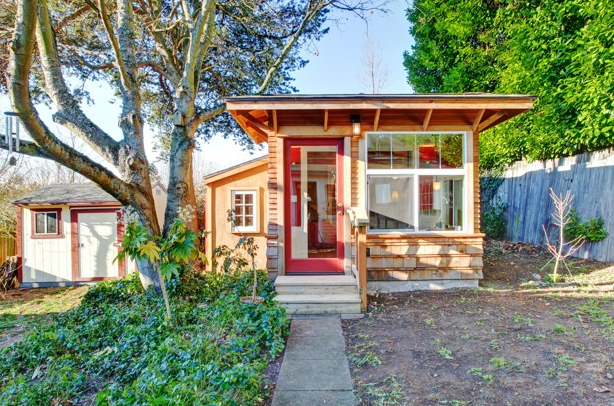 Planners call them Accessory Dwelling Units—plus the inevitable acronym, ADUs. What they mean are the granny flats and in-law apartments sprinkled throughout cities and towns across the land, the finished basements, above-garage studios, rehabbed carriage houses, and other outbuildings on parcels generally zoned for single-family homes.
Planners call them Accessory Dwelling Units—plus the inevitable acronym, ADUs. What they mean are the granny flats and in-law apartments sprinkled throughout cities and towns across the land, the finished basements, above-garage studios, rehabbed carriage houses, and other outbuildings on parcels generally zoned for single-family homes.
But here’s what they really are: an instant source of affordable housing, if only they could be freed from extensive restrictions that cities and towns have in place that tightly limit who can live there.
When I was at the Office for Commonwealth Development under Massachusetts Governor Mitt Romney, we tried to increase the supply of new multi-family housing at smart growth locations, in town centers or by transit stations. Yet it quickly became apparent that there were thousands of existing homes already, in the form of Accessory Dwelling Units. The trick was just to open them up.
This was no small task, as it turned out. Fueled by NIMBYism and concerns about density and school enrollment and parking and congestion, cities and towns wrote reams of codes requiring that property owners prove any occupants of ADUs were actually related. If not, owners could expect to be visited by inspectors checking out separate entrances and working kitchens and evidence of occupation, and brace for a fine. Eagle-eyed neighbors spotting a second mailbox or satellite dish were more than happy to alert the authorities.
In the face of this kind of code paralysis and regulatory over-reach, it’s understandable that reformers would just give up, and try to change policy in other ways. But in recent years, a sensible program of disentanglement has emerged from an unlikely place—the small city of Durango, Colorado, just north of the New Mexico border…
Durango overhauled its Land Use and Development Code, which called out Accessory Dwelling Units as an acceptable component of housing stock…
The big problem, however, was what to do with existing ADUs.
Since many of these homes were technically illegal, a form of “ADU Amnesty” was launched. Starting with two neighborhoods as a pilot program, the city asked owners to come forward about ADUs on their property. Residents could fess up in three categories—pre-1941, when there were essentially no rules about ADUs; 1941 to 1989, when ADUs could be considered legal but non-conforming use; and 1989 to the present, when tighter zoning was in place.
If somebody established an ADU completely under the radar, they were asked to pay the fee they were supposed to pay, ranging from $2,000 to $9,000, and the property got logged into the city’s inventory database. Owners signed affidavits on basic structural safety, and filled out forms on the number of occupants, age of the structure, and the utilities in place, and furnished a photo.
Getting the transactional details on the record was basically a process of regularizing what was a robust informal economy. And with the existing ADUs thus inventoried, and the rules in place for new ADUs, the city was all set, right? Not exactly. Opposition was fierce, and clever.

The new website looks great!
Thanks Amy 🙂